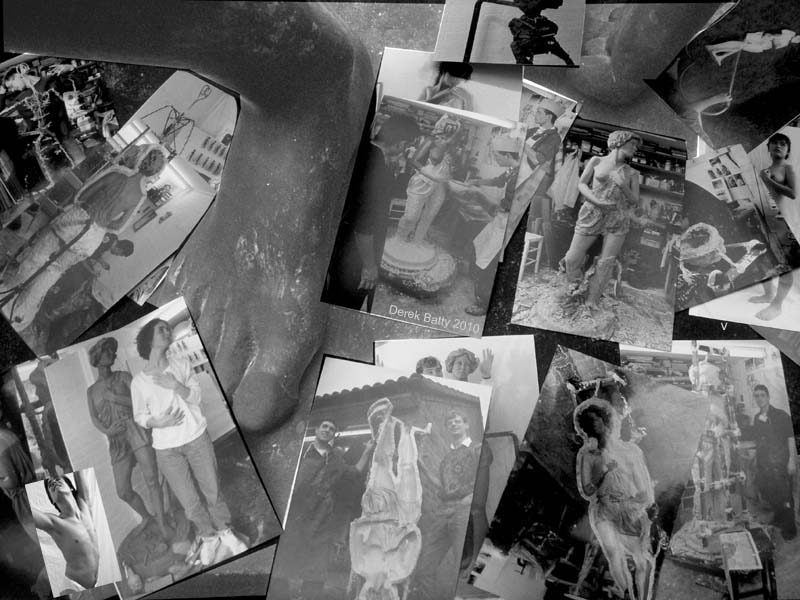|
Casting plaster sculptures - a photomontage |
| The sculptures were modelled in clay on an iron
framework. Phillippa, Kaori, Marion and Robert posed at various
times. I worked directly from the model and from drawings and
photographs. Steven helped me mix up all the plaster which is done in
batches. They were cast in plaster using the waste mould process,
so called because the mould is broken and destroyed in order to reveal
the cast.
Plaster is thrown onto the surface of the clay in layers up to 2cm thick. The mould is designed with the front in one piece and the back in five sections. The front 'mother' mould' is supported with a wooden framework. Once set, the back pieces are prized off and the clay is dug out of the rest of the mould. The mould is cleaned, sealed and waxed before being laid up with plaster and jute scrim to create the final piece. The cast is hollow from the knees up. Because the cast could not support itself on its plaster ankles alone, strong iron bars are introduced into the cast from the base and run up to the neck. The whole mould is put together with a final squeeze of setting plaster along the seam joints. Twenty minutes later the joyous task of chipping out the cast can begin. Firstly removing the wooden structure and then gradually attacking the mould with a hammer and mallet. Because the mould was made in layers the plaster flakes off like an onion, finally revealing the pristine smoothness of the cast. This is not quite the end because there is always some touching up to do, such as trimming the seam lines and filling any indentations made with a too hasty chisel. What about the paper hat you might ask? This is made to a traditional design out of brown paper and serves the useful task of keeping the flying plaster out of your hair. This was worn by Italian bronze founders and most notably by George Mancini who taught me this process at Edinburgh College of Art. |
